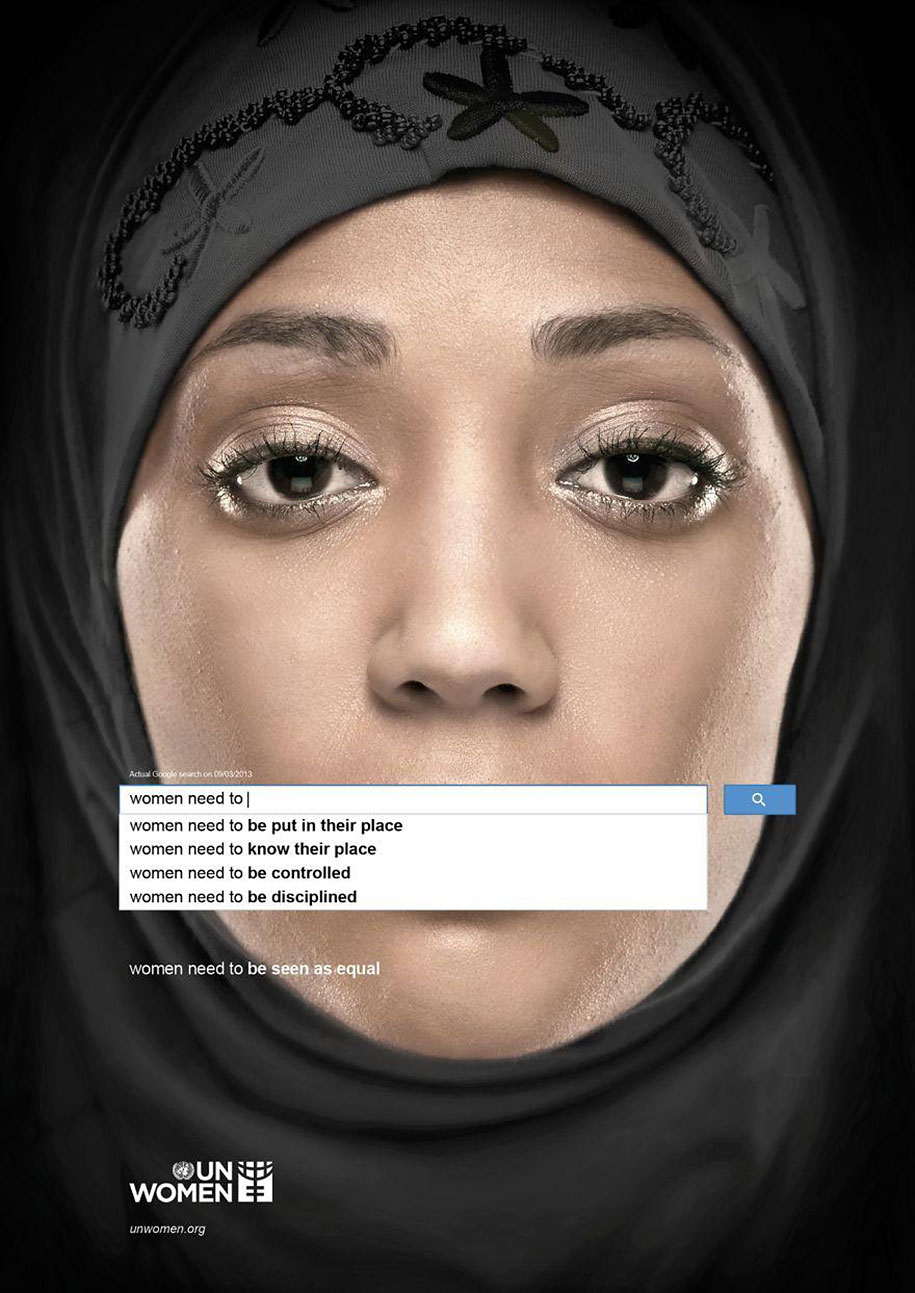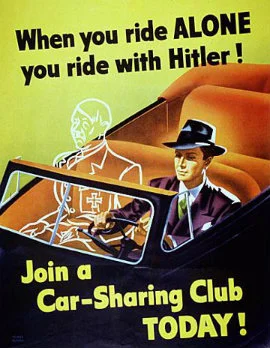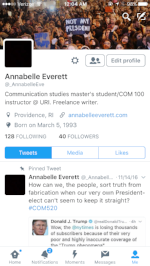Leap #4: Reflecting on COM 520
Spotted in my natural [media-saturated] habitat.
Prior to enrolling in COM 520: Media Studies, I had operated with an incomplete view of media, rarely acknowledging its omnipresence or influence. My conceptualization was admittedly limited in scope. However, my descent into the world of media studies and media literacy has taught me that media is not the static entity I once believed it to be. It is ever changing and profoundly influential. Media has the ability to reach others; it is influenced by a multiplicity of factors, including culture and time period. Some media is massive, while other kinds are more personal. Ultimately, media is an expression of ideas and/or thoughts. It can take many forms, from print to sound to image, and more. In the past, I held a limited perspective on the purpose of media, believing it mostly to entertain and occasionally to inform. In reality, media has many other purposes. It can surely serve to entertain and inform, but also promote, persuade, and educate. Regardless of a given purpose, media holds a level of influence over audience. Perhaps my most startling revelation in this course regarded my own power as a user and creator of media; that as much as media shapes me, I am allowed the tools to shape and create it as well. The various readings, assignments, and class work I have completed throughout the semester have contributed to this new, further developed conceptualization of media. What will follow is a limited synthesis of my experience in COM 520 that contributed to this new perspective.
Engaging with texts is how I learn best, and I was exposed to a variety of rich sources in COM 520, each divulging a new facet of media and media studies. Cynthia Lewis’ examination of Mikhail Bakhtin further expanded my understanding of media. This chapter of Renee Hobbs’ Exploring the Roots of Digital and Media Literacy through Personal Narrative stuck with me. As a student with an undergraduate degree in writing, I was struck by Lewis’ focus on the power of words, giving both speaker and audience equal agency over a message. She deftly explored Bakhtin’s perspective. One particular claim of Bakhtin’s that Lewis discusses states, “the word in language is half someone else’s” (p. 78). Much like Lewis, I am drawn to this statement, as both a writer and an academic. A speaker or author holds a level of ownership over his or her own words, but language can only be understood fully within a specific social context. In relation to media, I found this revelation to be a powerful one. The creators and users of media shape its content, but ultimately it is imperative to consider its societal influences and limitations.
A screencast developed for my graduate media studies course. Fall 2016.
Leap 1 allowed me to utilize my training in rhetorical analysis with my newfound knowledge of media and media literacy. For my screencast, I chose to focus on noted rhetorician Kenneth Burke. I examined the notion of identification, using this theoretical concept to examine an example of contemporary propaganda. Burke argued that persuasion was only possible when some semblance of similarity existed between speaker and audience. By examining this example, I was able to draw connections between two of my areas of academic interest, rhetorical analysis and media studies. This experience also served as a nice transition into the work of Edward Bernays and helped to further contextualize my understanding of propaganda and media in general.
Through Edward Bernays’ Propaganda, I was introduced to the ever-present nature of propaganda and the vast potential of media to influence the masses. Propaganda always seemed so removed from my own experience. I believed it was a tool used by governments of the past, during wartime especially. Although initially written back in 1928, Bernays’ exploration of propaganda revealed just how wrong I was. The concepts he articulates are very much at play today, just as much as when he wrote his book. Engaging with this particular text taught me that propaganda is a much wider phenomenon than I initially imagined. Bernays defines propaganda as a force influencing society in both conscious and unconscious ways. These forms of media aim to modify our thoughts and behavior. He articulates the notion that this force is a dangerous one, but is ultimately a necessary factor in maintaining societal order.
[ Break for propaganda ]
Propaganda initially seemed an entirely invisible force propagated by the government, when in reality we are confronted by it every single day through many different channels. As week 5 of our course exemplified, propaganda is all around us, from the blatant advertisements posted on bus stops to product placement in our favorite shows to the sponsored content shown on Facebook. These types of propaganda may seem, and very well can be, fairly innocuous. That is, if we are equipped with the necessary media literacy skills to transform us from passive to active users of said media.
A visual representation of the constant barrage of information and elevated sociality on social media platforms.
As a millennial, I have been socialized through social media platforms. If I once thought I was an expert on these forums, I no longer any similar illusions. This course has revealed that there is so much more to them than meets the eye. Jose van Dijck’s The Culture of Connectivity exposed me to a new world of social media that I was eager to explore and engage. One of my initial takeaways was that the participatory culture of social media serves to foster connections between users, allow them to build communities, and advance democracy. She discussed this idea of connectivity as a resource. The sociality of social media has become a sort of commodity for businesses, which, in turn, seems to lead to the view of user as commodity. The commoditization of individuals was an alarming concept, but the development of the social media world we live in today exemplifies this idea. Social media are systems that manipulate connections, shaping content specifically for individual users. Social media content is not ours to control, but is controlled by the governing systems of the platforms we use.
My personal twitter account.
This post admittedly presents a limited analysis of the many sources I engaged with during the course. However, I readily admit that each of the various readings and assignments within COM 520 ultimately transformed any perceptions I held of my role as a media-user and maker, as well as transformed my role as a student. I have always been an active participant and learner. I do not learn well just by simply reading a text. In order to fully absorb knowledge in an academic setting, I must engage with a text further, either through writing or class discussion. My experience in COM 520 has been no different. In fact, I have felt even more engaged and encouraged to participate as a student. Reflecting on my participation and learning within this course is humbling. I have always been a more traditional student; I read what I am assigned and I complete homework and writing assignments in a timely manner. Neither of these aspects of student-hood has changed for me, but I have definitely expanded my role as a thinker and learner. I was exposed to media studies briefly in my undergraduate career, but have never before experienced such an interactive course. Past classes have given me tools to examine media from a position of distance, while COM 520 has allowed me to not only interact with media, but to create it. The level of interactivity afforded to us in this class has ultimately benefitted my graduate learning experience and transformed the way I view media in general. Concurrently, the consistent focus on media literacy in this course has led me through a process of self-reflection as a media maker, consumer, and user. I am more aware of the media that surrounds me. My newfound knowledge has transformed my experience in the media-saturated world of today. I am now able to pinpoint examples of propaganda and I can sort through media sources to determine their validity, a skill that is becoming increasingly relevant in the current political landscape.
Lastly, I was drawn to and inspired by the notion of the Burkean parlor, introduced to us initially by Dr. Hobbs. This metaphor views scholarship as an ongoing dialogue. The emphasis on continuous conversation, one that anyone may enter, gives the individual greater agency within academic dialogue. This emphasis fostered a classroom atmosphere of inclusivity. Such an environment was especially comforting in a class composed of students from varying backgrounds and at alternating stages of their academic careers. We may be different types of students, media-users, and citizens, but our voices are heard and our contributions valued. My experience in COM 520 is not one I will soon forget and I will surely take the knowledge and skills developed in this class as I make my way from academic to the professional world. I may not consciously engage these sources on a daily basis when I leave this classroom at the end of the semester, but my overall experience has allowed me to further develop my role as a thinker, transformed the way I absorb media, and opened my eyes to a new world of media literacy.
(A humorous examination of an app who's entire premise is to have humans 'rate' each other. This app is surprisingly not a parody.)
References
Bernays, Edward. 2005/1928. Propaganda. IG Publishing: New York.
Carvell, T. & Gurewitch, D. (Writer), & Leddy, B. (Director). (2015). Mental health [Television series
episode]. In Oliver, John. (Executive Producer), Last week tonight with John Oliver. New York, NY: HBO.
Hobbs, Renee. 2016. Exploring the Roots of Digital and Media Literacy through Personal
Narrative. Philadelphia: Temple University Press.
Van Dijck, Jose. 2013. The Culture of Connectivity: A Critical History of Social Media. New
York: Oxford University Press.

![Spotted in my natural [media-saturated] habitat.](https://images.squarespace-cdn.com/content/v1/57d838c6ff7c50b3da770b4b/1480482027659-RVOPL9YFVS4KACNEIKL5/14925418_10154037044527514_4681776071639318510_n.jpg)





